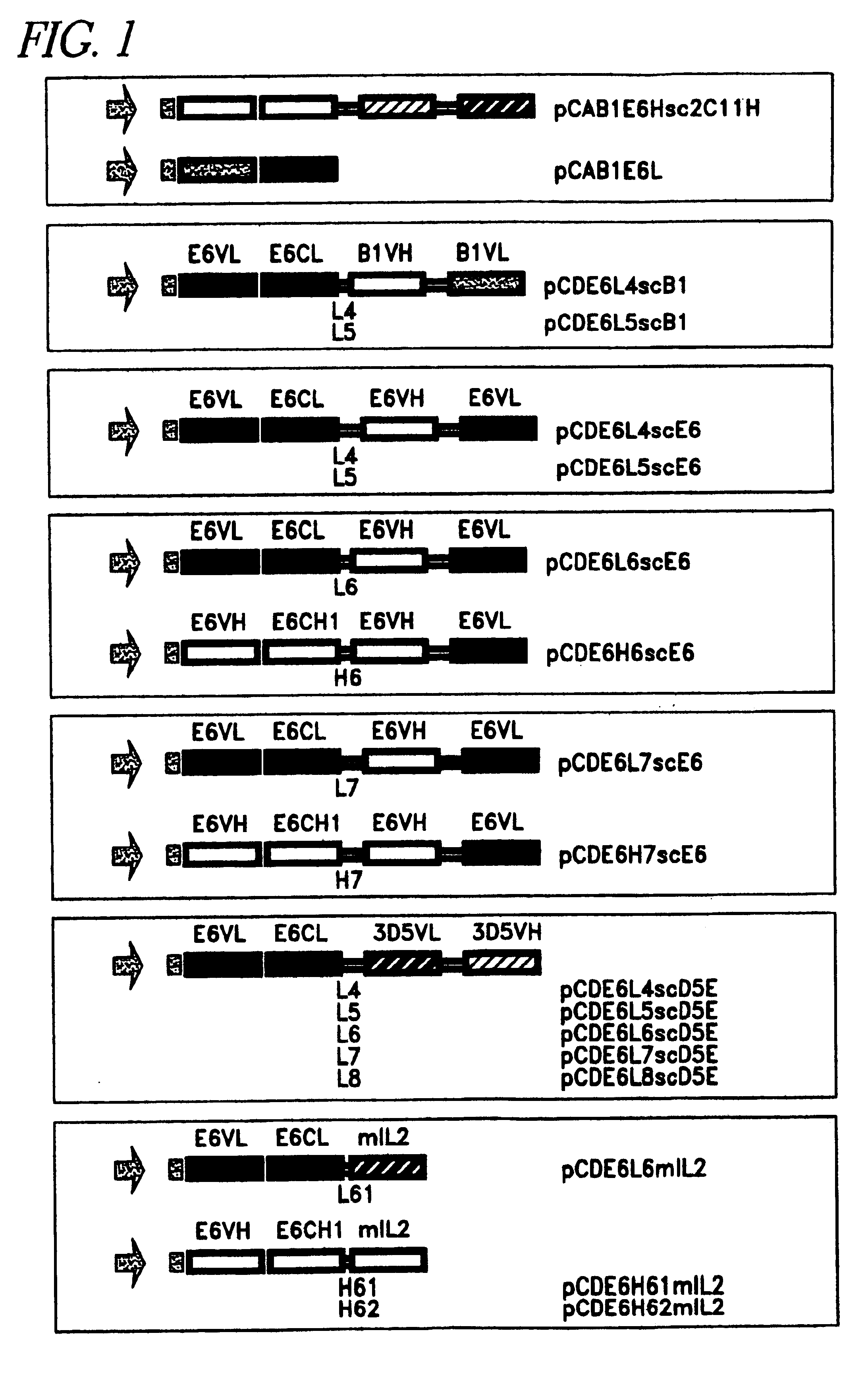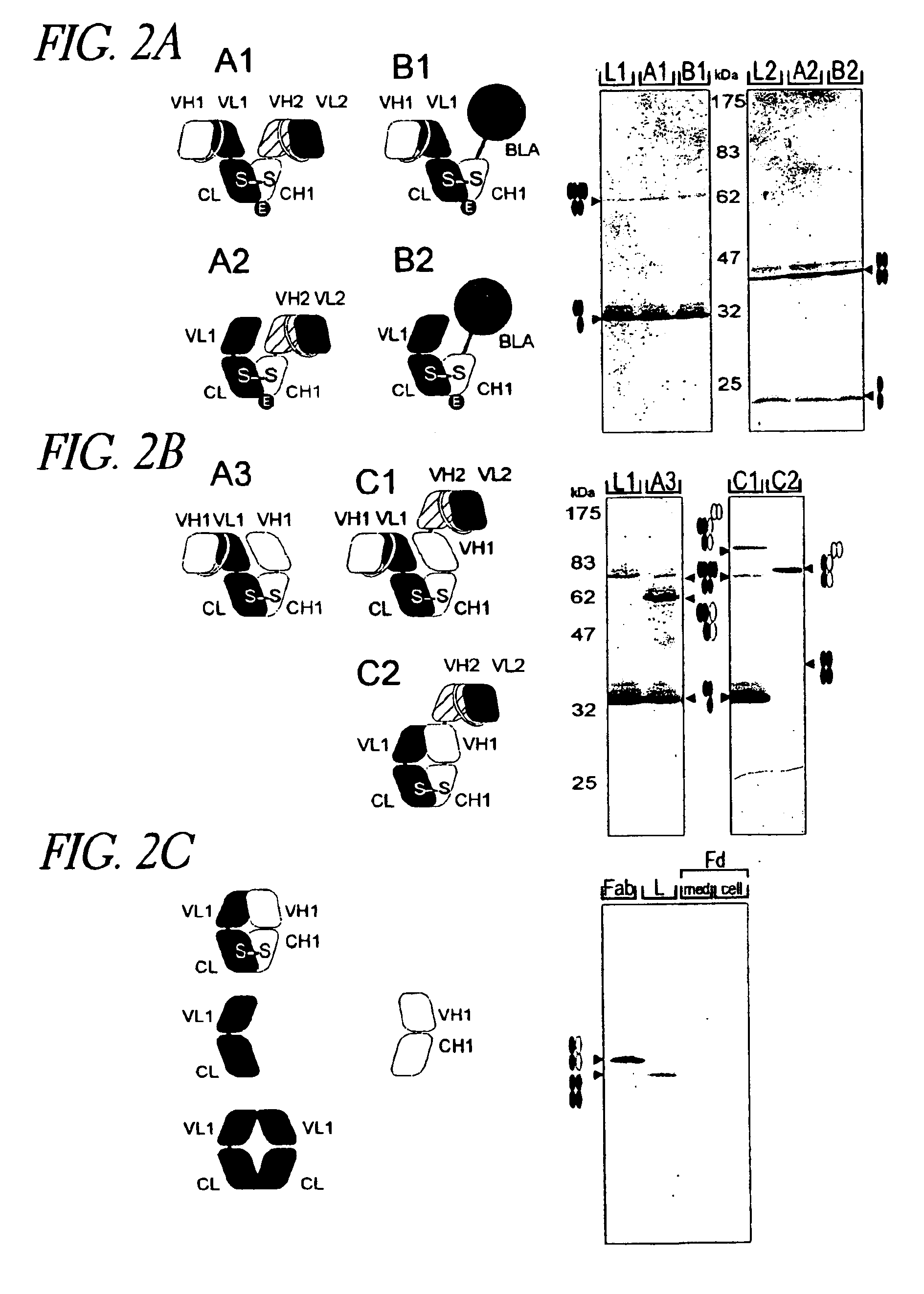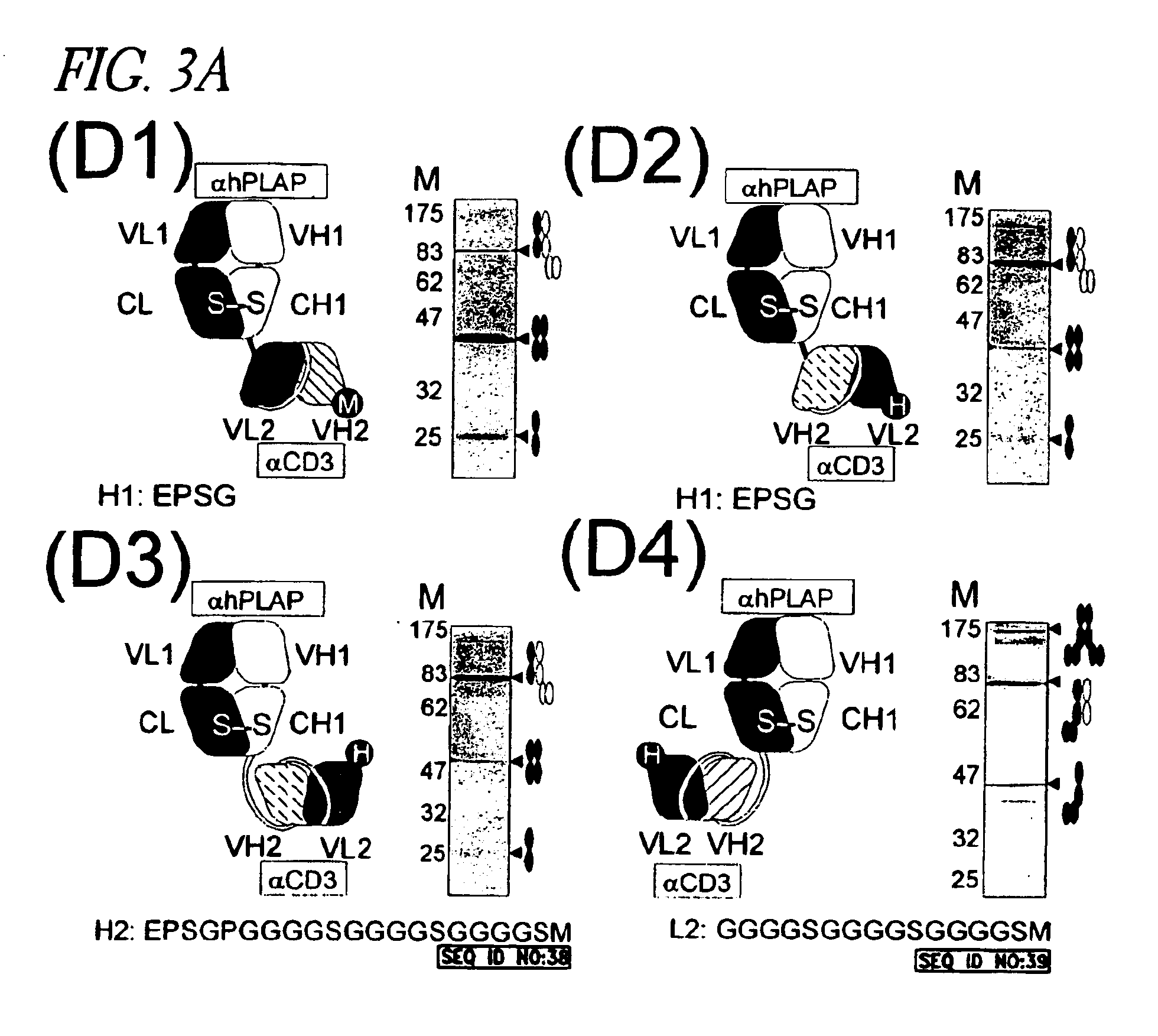Multipurpose antibody derivatives
a technology of antibody derivatives and antibodies, applied in the field of multipurpose antibody derivatives, can solve the problems of affecting the more general use of bsab in clinical applications, the difficulty of producing functional bsab in sufficient quantity and purity, and the inability to achieve sufficient bsab quantity, etc., and achieve the effect of efficient preparation
- Summary
- Abstract
- Description
- Claims
- Application Information
AI Technical Summary
Benefits of technology
Problems solved by technology
Method used
Image
Examples
example 1
Heterodimerization by CL-CH1 Interaction in Eukaryotic Cells can Depend on Appropriate VL-VH Pairing
In a first attempt, minibodies were constructed using the CL and CH1 domain on their own to promote heterodimerization of two different scFv molecules. However, after cotransfection of expression plasmids for the VH-VL-CL (scFv-CL) and the VL2-VH2-CH1 (scFV-CH2) fusion proteins, largely all secreted immunoglubulins, detected by an anti mouse IgG .gamma. / .kappa. serum were in the monomer format. Inclusion of an E-tag on the C-terminus of the CH1 domain, allowed for the easy discrimination between scFv-CL and the E-tagged scFv-CH1 by immunodetection with an anti E-tag antibody. This clearly showed that the monomers were not scFv-CH1 and that the slight amount of diners formed did not contain the scFv-CH1 fusion molecule, and hence consisted of scFv-CL molecules alone (data not shown). To avoid possible steric hindrance caused by the fusion of the scFv molecules to the CL and CH1 domains...
example 2
Fab-scFv Heterodimers as a Model System for Bispecific Antibodies
One of the disadvantages of using smaller recombinant BsAb molecules such as (scFv)2 molecules or dimerized scFv molecules is the relative short reach to far apart antigens. This is especially important if the molecules are intended to link two different cells. When the Fab chains are used as a heterodimerization motif, they can constitute a binding specificity on their own. To improve upon the interaction range, the second specificity was fused to the other side (C-terminus) of the location of the binding specificity of the Fab fragment. Since a scFv molecule confers the second binding specificity, the molecular weight will still be low enough to allow rapid tissue penetration, while being high enough to avoid rapid body clearance.
The artificial peptide linker used to connect the scFv to the Fd or the L chain should not contain a functional hinge region, since this motif can be responsible for a homodimerization of tw...
example 3
Fd:L Mediated Heterodimerization of Two Different scFv Molecules: Efficient Expression of Trispecific Antibodies
Since C-terminal scFv fusion to either the Fd or the L chain could be expressed successfully and resulted in functional molecules, we investigated whether the Fab molecule could still be formed if both chains were elongated. When using the L:Fd heterodimerization signal to join two scFv molecules, a trispecific molecule can be created by also using the specificity of the Fab molecule created by the L:Fd heterodimerization. This was done by co-transfecting a VL-CL-VH2-VL2 (L-scFv) with a VH-CH1-VH3-VL3 (Fd-scFv) fusion-protein expressing vector (FIG. 7A). Especially when fusing two scFv molecules at the same side of the molecule it is important to monitor if binding functionality is not affected by the configuration of the TsAb. Fv domains have their antigen recognition side more oriented towards the N-terminal side, while this is also the side where the fusion to the Fab c...
PUM
| Property | Measurement | Unit |
|---|---|---|
| pH | aaaaa | aaaaa |
| pH | aaaaa | aaaaa |
| pH | aaaaa | aaaaa |
Abstract
Description
Claims
Application Information
 Login to View More
Login to View More - R&D
- Intellectual Property
- Life Sciences
- Materials
- Tech Scout
- Unparalleled Data Quality
- Higher Quality Content
- 60% Fewer Hallucinations
Browse by: Latest US Patents, China's latest patents, Technical Efficacy Thesaurus, Application Domain, Technology Topic, Popular Technical Reports.
© 2025 PatSnap. All rights reserved.Legal|Privacy policy|Modern Slavery Act Transparency Statement|Sitemap|About US| Contact US: help@patsnap.com



